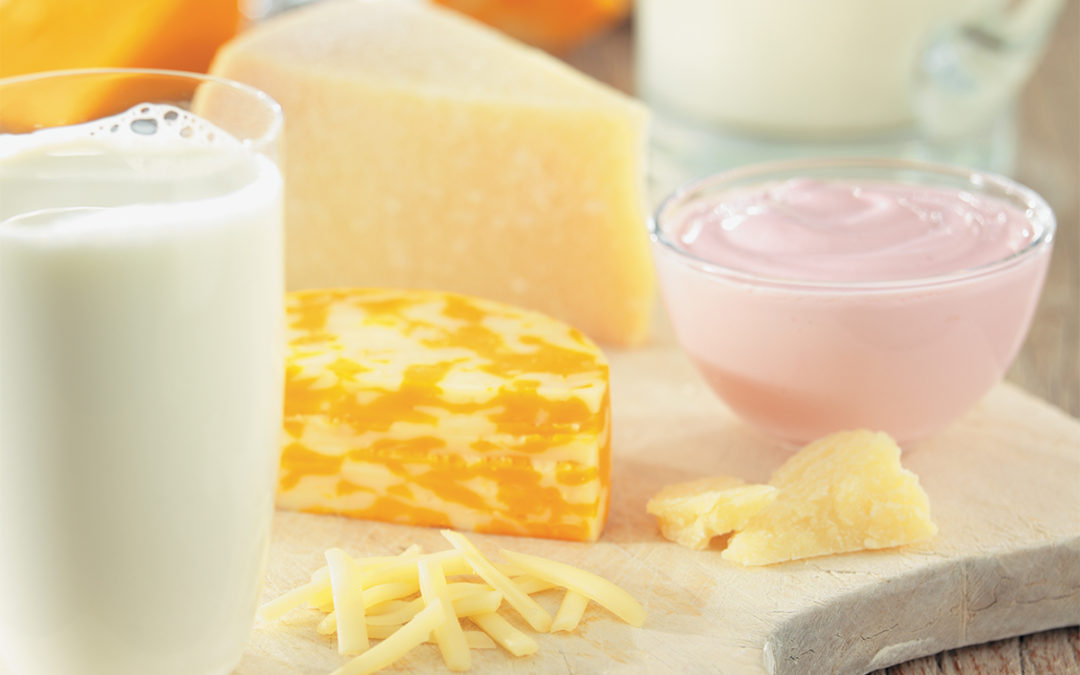It’s June Dairy Month! What better time for YOW to celebrate dairy foods and health?
Most of us remember learning in school that we should drink milk to get calcium for strong bones. But, dairy foods provide more than just a healthy allotment of calcium, and drinking milk isn’t the only option. The important role dairy foods play in healthy eating and wellness from childhood to adulthood have been re-confirmed in the recently released 2015-2020 USDA Dietary Guidelines for Americans (DGA).
Dairy foods are a fundamental part of the new DGA because of the important nutrients they provide. Healthy eating styles that include 3 servings of dairy every day are linked to decreased heart and vascular disease, decreased type 2 diabetes in children and adults, and improved bone health in children.
There’s plenty to celebrate here. But, what about all of the talk recently about dairy fat?
The DGA emphasize choosing low-fat or fat-free dairy products due to the long-held belief that the saturated fat in dairy foods contributes to heart disease. These recommendations haven’t changed in 30 years, but emerging research is beginning to raise questions.
For example, a 2015 study by the World Health Organization found no clear link between higher intake of saturated fats and heart disease among healthy adults.
Dairy foods, from full-fat to fat-free, have also been shown NOT to be associated with heart disease. Could it be true? Some studies even show that intake of dairy foods (with any fat content) may reduce the risk of heart disease. Saturated fat may not be linked as directly as we’ve thought. And, scientists are beginning to consider other beneficial nutrients in dairy that seem to help protect us from negative health outcomes.
More research is needed to fully understand how whole, low-fat, and fat-free dairy foods impact health. What is clear, and worthy of celebration, is that eating nutrient-rich dairy foods – regardless of fat content – is associated with lifelong health.
So I can eat as much full-fat dairy as I want?
You probably guessed that the answer isn’t a simple yes or no, even though that is just what we all want! Lifelong health is about many factors – things that YOW is addressing – like tobacco, healthy eating, physical activity, and finally, body weight. Obesity is a crisis that impacts almost every aspect of health, which makes getting to and staying at a weight that is right for you very important. Calories matter.
That’s another reason why diet advice focuses on lean, low-fat, and fat-free choices. Fat is calorie-dense. Every gram of fat is equal to 9 calories, over twice as much per gram compared to carbs and protein. In the case of dairy, there’s a 70 calorie difference between 1 cup of whole milk (8 grams of fat) and 1 cup of skim milk (0 grams of fat).
Whole fat dairy foods can be part of a healthy eating plan, but the key is to balance calories and saturated fat. Healthy eating is all about choosing a variety of tasty foods you enjoy in the amounts that are right for you. If you want help figuring out what is right for you go to www.supertracker.usda.gov/ .
What about taste?
Yes, many people think full-fat dairy products taste better than reduced-fat products. It’s true— fat adds richness, melts in our mouths, and simply tastes delicious. Fat is also digested more slowly, helping us feel fuller longer. But in order to avoid eating extra calories, it is helpful to choose wisely. When choosing higher fat foods, choose them for the “company that they keep.” Full-fat cheese is a good example of a wise choice because it is not only an excellent source of calcium, but also a good source of protein and other nutrients important for health. It’s okay for food to taste good and be good for you!
What to Celebrate
For June Dairy Month and all throughout the year, celebrate dairy foods and the important nutrition they provide. Make dairy foods – in all fat levels – part of your day, every day.
Reference: Science Brief: Whole and Reduced-fat Dairy Foods. National Dairy Council, May 2016. https://www.nationaldairycouncil.org/content/2016/science-brief-whole-and-reduced-fat-dairy-foods

